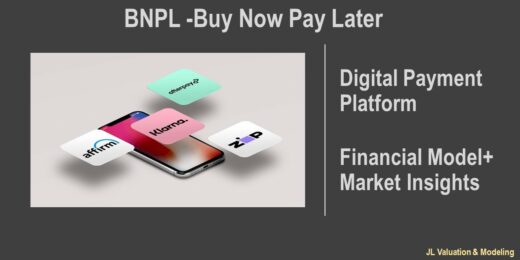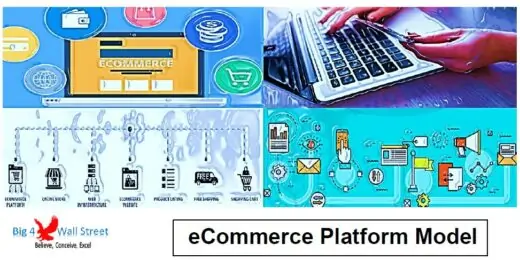Navigating The Complexities of LTV: CAC: A Step-By-Step Guide

As a business owner, you know how critical managing your key business metrics is to driving sustainable growth. Two of the most important metrics to understand are Customer Lifetime Value (LTV) and Customer Acquisition Cost (CAC). Calculating and optimizing these metrics can seem complicated, but with the right approach, you can gain valuable insights to shape your marketing and growth strategies. This guide will walk you through calculating your LTV: CAC ratio step-by-step. By the end, you’ll have a clear understanding of how to determine each metric for your business and how to interpret the results to make data-driven decisions that will fuel your company’s long-term success. With the knowledge you gain here, you’ll be equipped to confidently navigate the complexities of LTV and CAC.
Understanding LTV and CAC
To successfully navigate LTV (Customer Lifetime Value) and CAC (Customer Acquisition Cost), you must first understand what they mean.
LTV refers to the total net profit attributed to a customer over the lifetime of your relationship with them. It is calculated by subtracting the customer acquisition cost from the revenue generated from that customer. LTV gives you an estimate of the maximum you can spend to acquire a new customer before losing money.
CAC refers to the total cost involved in acquiring a new customer. It includes marketing and sales expenses related to acquiring new customers like advertising, promotional events, and partnership costs. By determining your CAC, you know how much you can spend to gain a new customer without compromising your profit margins.
A good LTV:CAC ratio is 3:1 or higher, meaning for every $1 spent acquiring a customer, that customer generates $3 in revenue. To improve your LTV:CAC ratio:
- Increase customer retention and loyalty. The longer a customer remains with you, the higher their lifetime value. Offer promotions, rewards, and superior customer service to keep them engaged.
- Upsell and cross-sell. Sell additional products and services to your existing customers. Their familiarity with your brand makes them more likely to buy from you again.
- Reduce CAC. Evaluate your marketing and sales efforts to cut any unnecessary costs. Negotiate better rates with partners and vendors. Automate and optimize parts of the sales process.
- Increase prices and profit margins. If your product or service warrants it, raise prices to boost revenue and LTV. But do so carefully without alienating your customers.
With diligent tracking and optimization of LTV and CAC, you can build a sustainable growth model and business. Success comes from striking the right balance between acquiring new customers and maximizing the value of existing ones.
Calculating Customer Lifetime Value
To determine your LTV:CAC ratio, you first need to calculate your customer lifetime value (LTV). This refers to the total net profit attributed to the entire future relationship with a customer. It can be calculated as:
LTV = (Average Order Value) x (Purchase Frequency) x (Customer Lifespan)
- Average Order Value: The average amount a customer spends each time they make a purchase from your business. Calculate this by dividing your total revenue by the number of orders in a given time period.
- Purchase Frequency: How often a customer makes a purchase from your business. You can calculate this by dividing the total number of orders by the number of unique customers in a given time period.
- Customer Lifespan: The average length of time a customer continues to make purchases from your business before becoming inactive. Analyze your historical data to determine your typical customer lifespan.
For example, if your average order value is $50, customers make a purchase 6 times per year on average, and your typical customer lifespan is 3 years, your LTV would be:
LTV = $50 x 6 x 3 = $900
Tracking your LTV over time helps determine the long term value of your customers and the overall health of your business. A higher LTV means higher customer retention and loyalty. Comparing your LTV to your customer acquisition cost (CAC) provides your LTV:CAC ratio, an important metric for measuring return on investment.
With an understanding of the inputs and calculations required to determine LTV, you can gain valuable insights into your business and customers. Monitoring this crucial metric will help guide strategic decisions and optimize your marketing spend.
Determining Customer Acquisition Costs
To determine your customer acquisition costs (CAC), you need to calculate the total cost of acquiring new customers and divide that number by the total number of new customers acquired during that time period. This will provide you with an average CAC, which can then be used to evaluate the efficiency of your acquisition efforts and potential profitability of your customer base.
Calculating Total Acquisition Costs
The total acquisition costs include all expenses related to obtaining new customers, such as:
- Marketing costs like advertising, content creation, and promotion
- Sales costs including salaries, commissions, and travel
- Overhead costs for portions of rent, utilities, and technology allocated to customer acquisition
Add up all of these costs for the time period you want to evaluate, whether monthly, quarterly or annually. Be sure to only include costs that were directly involved in acquiring new customers, not general operating expenses or costs to serve existing customers.
Determining Total New Customers
Next, calculate the total number of new customers acquired during the same time period. Define what constitutes a new customer according to your business model. For example, it could be new sign-ups, first-time purchasers, or new client accounts. Avoid including repeat customers or existing customers that simply made another purchase.
Calculating Your CAC
With the total acquisition costs and total new customers in hand, you can now calculate your CAC by dividing the costs by the number of new customers. For example, if your total acquisition costs were $120,000 and you acquired 1,000 new customers, your average CAC would be $120,000/1,000 = $120.
Evaluating and Improving Your CAC
Compare your CAC to industry benchmarks to ensure it is within an acceptable range. Make adjustments to how you acquire customers to lower your CAC over time through more targeted marketing, optimized sales processes, or renegotiated overhead allocations. Monitoring your CAC regularly will help maximize the profitability of your customer base.
With consistent evaluation and refinement of how you calculate and optimize your CAC, you can gain valuable insight into the efficiency of your customer acquisition methods and overall business model. Carefully navigating the complexities of this metric can lead to substantial benefits for your company’s longevity and success.
Setting Target LTV:CAC Ratios
To determine a target LTV:CAC ratio for your business, follow these steps:
Calculate customer lifetime value (LTV)
First, determine your average customer lifetime value or LTV. This is the total net profit you can expect from a customer over their lifetime. To calculate:
- Estimate the average lifespan of a customer in years (ex: 3 years)
- Determine the average annual spend per customer (ex: $500/year)
- Deduct the average cost to serve each customer annually (ex: $200/year)
- Multiply the average customer lifespan by the average annual profit per customer (ex: 3 years x $300/year = $900 LTV)
Calculate customer acquisition cost (CAC)
Next, calculate your average customer acquisition cost or CAC. This includes all the costs involved in acquiring a new customer like marketing, sales, and promotional expenses. To calculate:
- Add up all customer acquisition expenses over a period (ex: $100,000 over 1 year)
- Divide the total acquisition costs by the number of new customers acquired (ex: $100,000/1,000 new customers = $100 CAC)
Set a target LTV:CAC ratio
An acceptable LTV:CAC ratio depends on your industry and business model. A good target for many companies is 3:1 or higher, meaning the lifetime value of a customer is at least 3 times your cost to acquire them.
- For a lower LTV:CAC ratio (1:1 to 2:1), focus on increasing LTV through upsells or improved customer experience.
- For a higher ratio (5:1 or more), you have opportunity to scale up customer acquisition to drive growth.
- Re-evaluate your LTV:CAC ratio regularly as business conditions change to make sure it remains healthy and sustainable.
Following these steps to accurately determine your LTV, CAC and target LTV:CAC ratio is essential to growing a profitable business with a scalable customer acquisition model. Continually optimizing to improve your ratio will help maximize long term success and ROI.
Tracking LTV and CAC Over Time
Tracking your customer lifetime value (LTV) and customer acquisition cost (CAC) over time is key to understanding the health of your business model and making data-driven decisions.
Review LTV and CAC definitions: As a refresher, LTV refers to the total net profit attributed to the entire future relationship with a customer. CAC refers to the total cost of acquiring a new customer, including marketing and sales expenses.
Calculate initial metrics: When you first start acquiring customers, determine your initial LTV and CAC. Compare the two numbers to ensure your LTV exceeds your CAC, indicating you have a sustainable business model. If not, you’ll need to work on increasing LTV or decreasing CAC.
Track metrics regularly: Continue calculating LTV and CAC at regular intervals, such as quarterly or annually. Look for trends over time to see if the metrics are improving or declining. Some signs of a healthy trend include:
- LTV increasing due to higher customer retention and spend
- CAC decreasing due to more efficient marketing and sales tactics
- The gap between LTV and CAC widening, indicating higher profitability
Make adjustments as needed: If the metrics show an unfavorable trend, take corrective action. Some options include:
- Improving the customer experience to increase retention and loyalty
- Optimizing your sales and marketing mix to reduce CAC
- Increasing prices to boost LTV, if the market can support it
- Diversifying your customer base to minimize risk
Benchmark against industry: Compare your LTV:CAC ratio to industry competitors to determine if you’re performing above, on par with, or below competitors. Make any final adjustments to exceed industry standards and maximize the long term value of your business.
Tracking LTV and CAC regularly and making data-driven decisions is key to sustaining a profitable business model. With continuous optimization of these metrics, you’ll be well on your way to building a sustainable, scalable company.
Using LTV:CAC to Guide Marketing Spend
Once you have calculated your LTV:CAC ratio, you can use it to guide your marketing spend and ensure you achieve a healthy ROI. Here are the steps to take:
Determine Your Target LTV:CAC: The ideal LTV:CAC ratio depends on your business model and industry. For SaaS companies, a good target is 3:1 or higher. For ecommerce, aim for 2:1 or better. If your current ratio is lower, you’ll need to improve it by increasing LTV or decreasing CAC.
Increase Lifetime Value: There are several ways to increase your customer lifetime value:
- Raise prices. If your product is underpriced, increasing fees can significantly boost LTV without majorly impacting churn.
- Upsell and cross-sell. Offering additional products, features, or services to your existing customers is an easy way to increase their lifetime spend.
- Improve retention. The longer you retain a customer, the higher their lifetime value. Work on enhancing the customer experience to increase satisfaction and loyalty.
- Reduce churn. Closely monitor churn rates and the reasons customers leave. Then make changes to address pain points and improve retention.
Decrease Customer Acquisition Cost: You can also improve your LTV:CAC ratio by lowering your customer acquisition cost:
- Optimize your marketing mix. Focus spending on the most effective channels and campaigns based on ROI and CAC. Cut underperforming efforts.
- Improve targeting. Use data and analytics to precisely target your ideal customers. More targeted ads and personalization will increase response rates and decrease CAC.
- Negotiate with partners. If you run affiliate programs or work with agencies, aim for lower payouts and commissions to reduce overall acquisition costs.
- Streamline the sales process. Identify any inefficiencies in your sales funnel and work to simplify the customer journey. The faster and easier it is for customers to buy, the lower your CAC will be.
By methodically implementing these strategies, you can achieve significant improvements in your LTV:CAC ratio over time. Regularly recalculate the metric to ensure your efforts are having the desired impact and make adjustments as needed to guide your marketing spend. With continuous optimization, you’ll reach your target ratio and gain a sustainable competitive advantage.
Optimizing Campaigns to Improve LTV:CAC
Optimizing your marketing campaigns to achieve the best lifetime value to customer acquisition cost (LTV:CAC) ratio is key to success. By making data-driven decisions, you can improve performance and maximize returns.
Calculate Your Metrics: First, determine your LTV and CAC. LTV refers to the total revenue generated from a customer over their lifetime. CAC refers to the total cost to acquire a new customer. Divide your LTV by CAC to get your ratio. A ratio of 3:1 or higher is ideal.
Review Campaign Performance: Examine which campaigns drive the most valuable customers and have the best conversion rates. Look at factors like channel, creative, demographic, geographic, and more. Find what’s working and double down on those high-performing areas.
Refine Your Targeting: Who are your best potential clients? Narrow your targeting to focus on the most qualified leads. Use demographic, geographic, and behavioral data to identify your ideal customer profiles. Tailor ads and messaging to specifically resonate with these groups.
Optimize for Conversions: Make it easy for people to convert by streamlining your funnels. Provide clear calls-to-action, minimize fields, offer free trials or demos, and highlight the benefits of your product or service. Test different variations of your campaigns to see which get the highest conversion rates.
Retarget Effectively: Many people don’t convert the first time they visit your site or see your ad. Retargeting allows you to reach people who have expressed interest in your offering to keep your brand top of mind. Customize retargeting campaigns based on someone’s level of engagement. The more engaged the lead, the more targeted your outreach.
Analyze and Improve: Regularly review how your campaigns are performing based on metrics like impressions, clicks, conversions, LTV, and CAC. Make ongoing optimizations to improve results. Small tweaks to targeting, content, design, or calls-to-action can significantly impact your LTV:CAC ratio over time. With consistent analysis and refinement, you’ll achieve the best returns from your marketing spend.
Case Studies and Examples of Successful LTV:CAC Optimization
To successfully optimize your LTV:CAC ratio, analyzing case studies of companies that have achieved an ideal balance can be highly insightful. Reviewing their strategies and approaches provides practical guidance for your own optimization efforts.
Case Study 1: Dollar Shave Club
Dollar Shave Club effectively optimized their LTV:CAC ratio by focusing on lifetime customer value from the start. They invested heavily in customer acquisition to gain market share, knowing their subscription model and affordable products would provide long-term value.
Within a few years, Dollar Shave Club’s LTV:CAC ratio exceeded 3:1. Key strategies included:
- Keeping products and subscriptions very affordable to encourage retention
- Providing a quality user experience to build brand loyalty
- Using humor and viral marketing in their advertising to keep costs low
- Optimizing their conversion funnel and subscription signup process
Case Study 2: Spotify
The music streaming service Spotify also has an enviable LTV:CAC ratio. Their strategies include:
-Offering a free trial and multiple paid subscription plans at varying price points to suit different needs. This makes the service very accessible and helps build lifetime value.
-Investing in a superior product design and user experience. Spotify’s interface is highly engaging, personalized, and easy to use. This fosters long-term customer retention and loyalty.
-Using data and analytics to optimize their conversion funnel. Spotify tracks user behavior and interests to target listeners with the right content, features, and upgrades at the optimal times.
-Running periodic promotions and special offers for subscribers to provide extra value and incentives to continue their memberships.
Key Takeaways
These examples demonstrate how companies can achieve a healthy LTV:CAC ratio through a customer-centric approach, focus on lifetime value, and data-driven optimization of the user journey. By keeping customers happy and engaged for the long run, you’ll build a sustainable business model and gain a serious competitive advantage. With the right strategies and commitment to excellence, you too can navigate the complexities of LTV:CAC and come out ahead.
FAQ on Using LTV:CAC Metrics Effectively
One of the most common questions about using LTV:CAC metrics effectively is:
What is a good LTV:CAC ratio?
A good LTV:CAC ratio is 3:1 or higher. This means the lifetime value of a customer is at least 3 times the cost to acquire that customer. The higher the ratio, the more valuable your customers are relative to acquisition costs. However, a higher ratio is not always better and depends on your business model and industry.
For software or subscription-based businesses with low variable costs, a ratio of 3:1 to 5:1 is a good target. For ecommerce businesses with higher variable costs, a lower ratio around 2:1 to 3:1 can still be healthy. The most important thing is that LTV exceeds CAC, proving your business model is viable.
How often should I calculate LTV:CAC?
It is recommended to calculate your LTV:CAC ratio at least quarterly to monitor trends. As your business grows and matures, compare the ratio to your historical averages.
What if my LTV:CAC ratio is below 1:1?
This means the cost to acquire customers exceeds their lifetime value, which is unsustainable. You’ll need to either reduce acquisition costs (CAC) or increase customer lifetime value (LTV) through upselling, cross-selling or customer retention efforts.
How do I improve my LTV:CAC ratio?
There are two ways to improve this important metric:
- Lower your CAC by optimizing your acquisition channels and campaigns to reduce wasted spend.
- Increase your LTV by improving customer experience, adding value, building loyalty and fostering retention. Upselling and cross-selling also increase customer value over their lifetime.
What other metrics should I track with LTV:CAC?
Other helpful metrics to monitor include: customer acquisition cost (CAC), customer lifetime value (LTV), churn rate, customer retention rate, upsell/cross-sell revenue, average order value (AOV), and customer acquisition channel performance.
Tracking your LTV:CAC ratio and related metrics is key to sustainable growth and scalability. Optimizing this ratio through lower costs and higher customer value will drive greater profitability and return on investment. With regular monitoring and testing, you can gain valuable insights to improve your marketing and business strategies.
Conclusion
As you have seen, determining and optimizing your LTV:CAC ratio is critical to the success and scalability of your business. While the calculations themselves may seem straightforward, applying them strategically requires ongoing testing, analysis, and refinement. Start by determining your key metrics and benchmarks, build your models, monitor your progress, and make adjustments as needed based on insights. With time and practice, managing your LTV:CAC ratio will become second nature and a key driver of growth. The effort required to gain a precise understanding of your true customer lifetime value and cost of acquisition will pay off through increased efficiency, reduced churn, and maximized profits. Stay dedicated to the process and keep your eyes on the key metrics that matter most for sustainable success.



















































